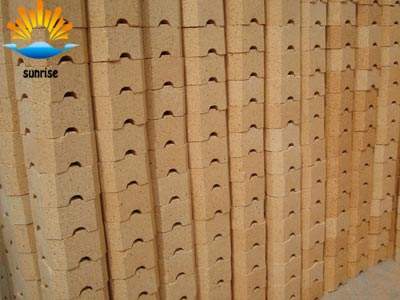The Basic Features of High Alumina Refractory Materials
2016-03-03

As can be seen from the phase diagram of Al2O3-SiO2 system, when the content of Al2O3 is less than 72%, the only stable high temperature solid phase at 1850℃ is mullite. Some SiO2 is composed of mullite and the remaining SiO2 forms a liquid phase at high temperatures. When the composition of high alumina refractory materials is close to the composition of mullite (71.8% Al2O3, 28.2% SiO2), the amount of liquid phase decreases and the refractory property is enhanced. Therefore, for high alumina bricks with an Al2O3 content of less than 72%, with increase of Al2O3, mullite increases and refractory property increases correspondingly; for high alumina bricks with an Al2O3 content of more than 72%, when there is when no solvent, stable solid phase at high temperatures is mullite and corundum. The temperature at which the liquid phase appears is the eutectic temperature (1840 ℃) of mullite-corundum system. When the Al2O3 content is more than 78%, with the increase of Al2O3 content, the content of corundum increases and its refractory property is continuously improved. When there is pure corundum, its refractory property is the best.
The thermal stability of high alumina brick is related to its mineral composition. For products with an Al2O3 content of less than 72%, with the increase of Al2O3, mullite crystal phase increases and the stability of products increases too. When the Al2O3 content is more than 78%, the eutectic crystal phase is mullite and corundum and the corundum increases with the increase of Al2O3, but the thermal expansion of corundum is bigger than that of mullite, which makes high alumina bricks less stable. However, the increase of corundum can increase the strength and thermal conductivity of products and, thus, improves the thermal stability of products.
The slag resistance of high alumina bricks increases with the increase of Al2O3 content and the pure corundum products has the nest slag resistance.
